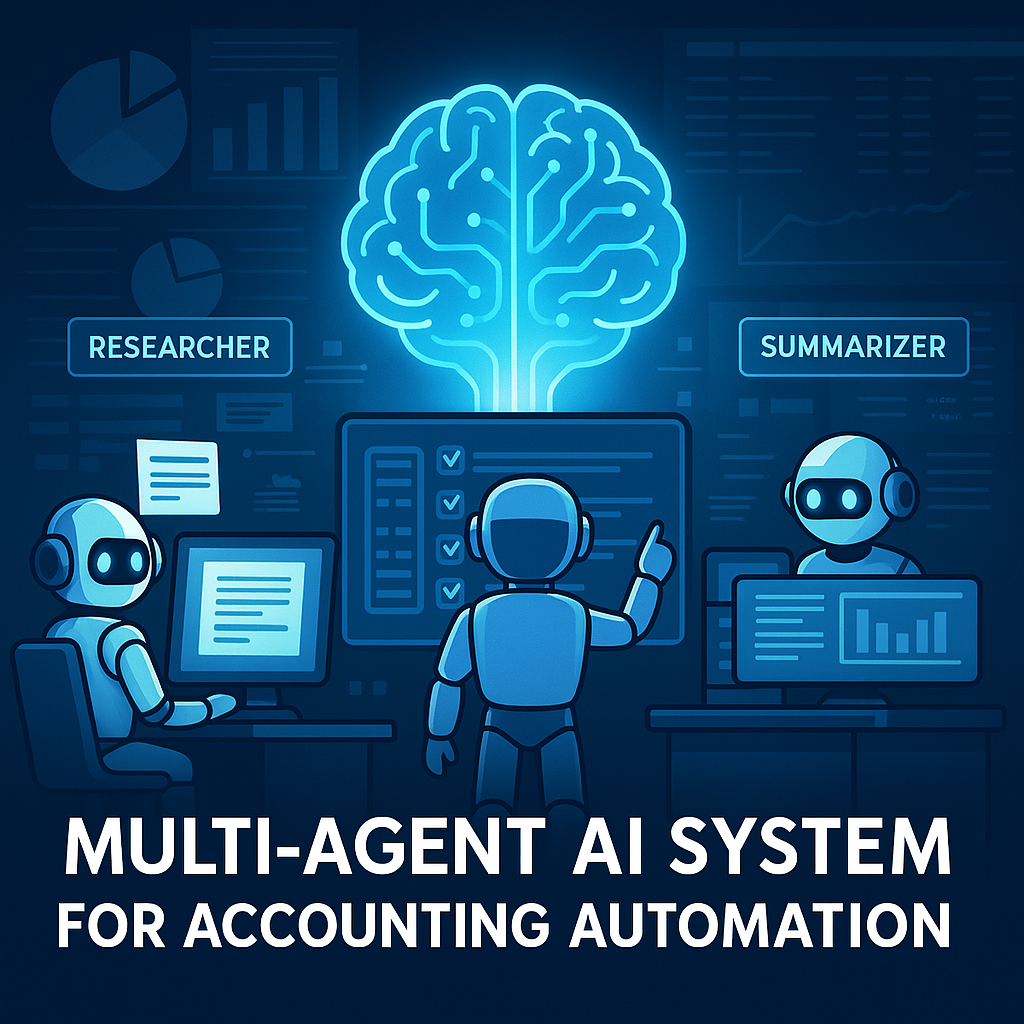Multi-Agent AI System for Accounting Automation
Table of contents

1. Introduction & Context
Why multi-agent AI systems are important.
Accounting me AI ka role (automation, orchestration, reliability).
2. Project Overview
Short intro (already likha hua hai tumne).
Roles of agents (Researcher, Planner, Summarizer).

3. System Design & Architecture
Step-by-step flow (user → orchestrator → agents → tools → DB → final output).
Insert system diagram image (architecture flow).
4. Agents in Detail
Researcher → what exactly it does.
Planner → how it breaks tasks.
Summarizer → how it ensures clarity.
(paragraphs me likho, sirf bullets nahi)
5. Tools & Integrations
FileReader, Calculator, LocalLLM, DB adapters (JSON, SQLite, Postgres stub).
Offline-first design philosophy.
6. Setup Instructions
Requirements, installation steps, curl test.
Add screenshots (terminal run, sample JSON output).
7. Sample Input/Output
Already likha hai, but make it formatted JSON code block.
8. Best Practices & Notes
Security, modularity, reproducibility, no external APIs.
How this aligns with Module 2 requirements (≥3 agents, ≥3 tools, orchestration, DB adapters).
9. Future Work
Expand with more specialized agents.
Add evaluation metrics.
UI via Streamlit/Gradio.
10. Conclusion
Multi-agent approach shows flexibility + scalability.
Offline + modular design is unique.
License:
This project is released under the MIT License.
It is intended for research and educational use, showcasing a modular and production-ready multi-agent system architecture.